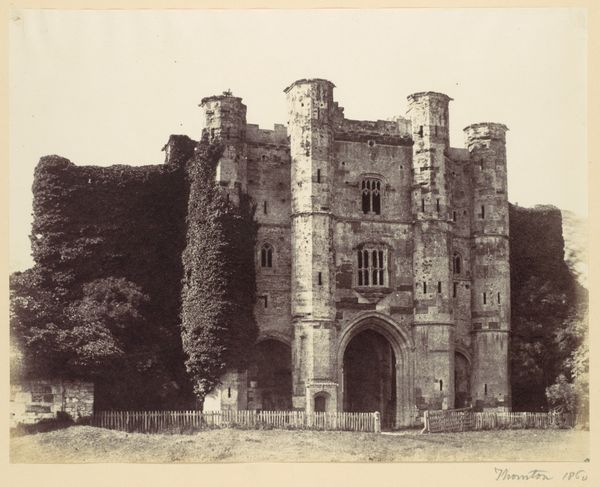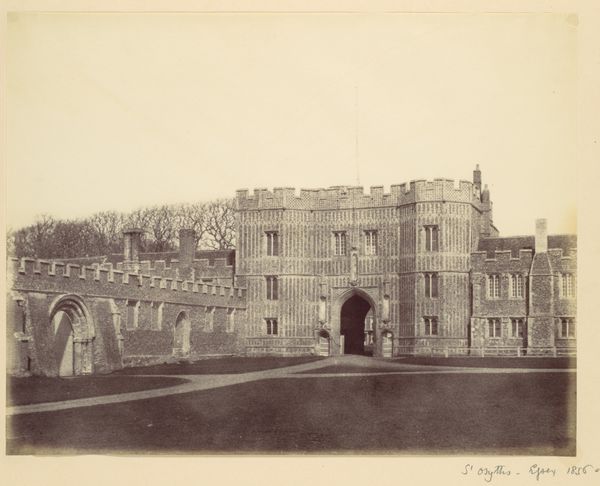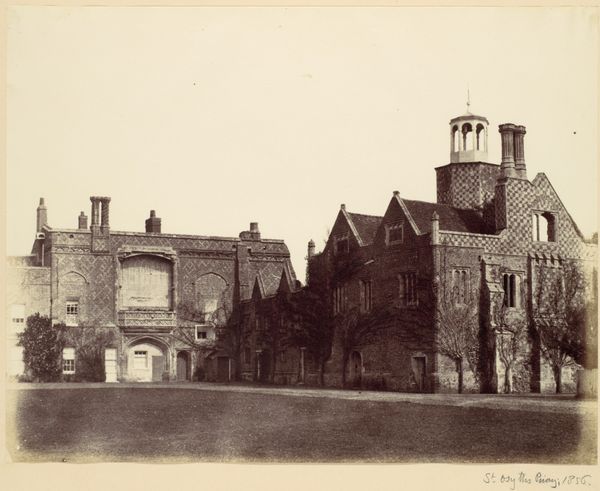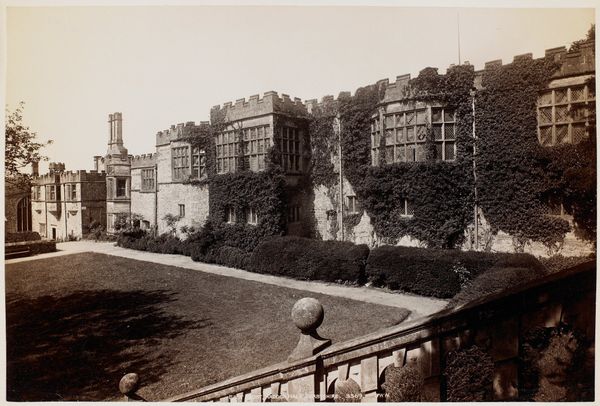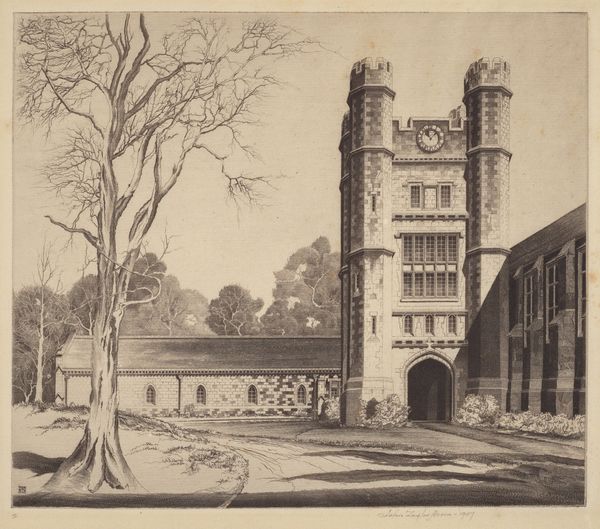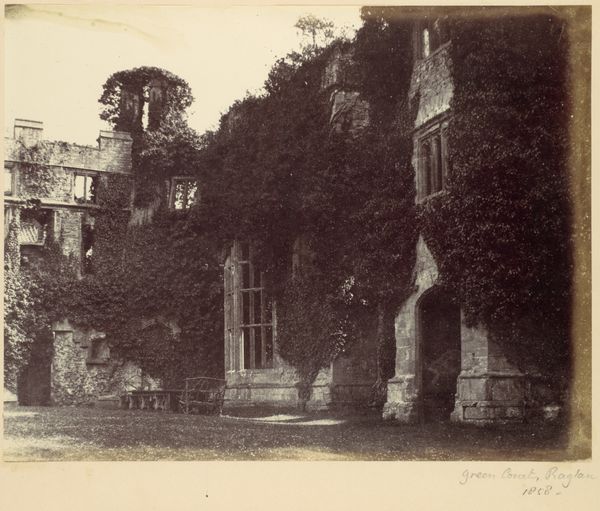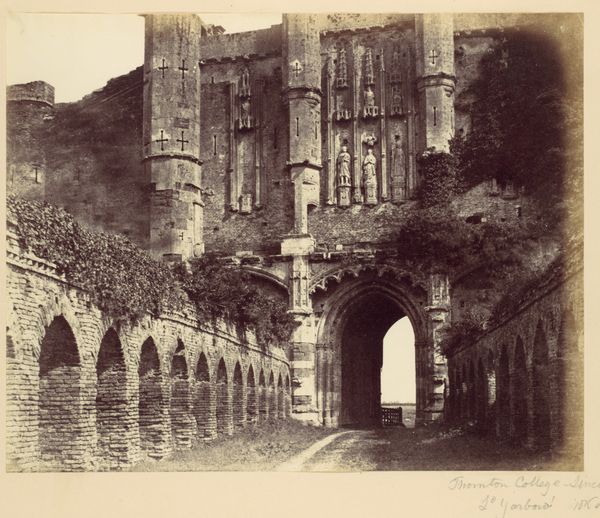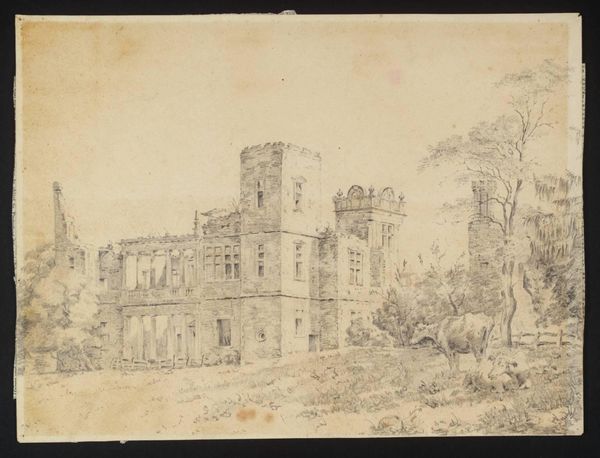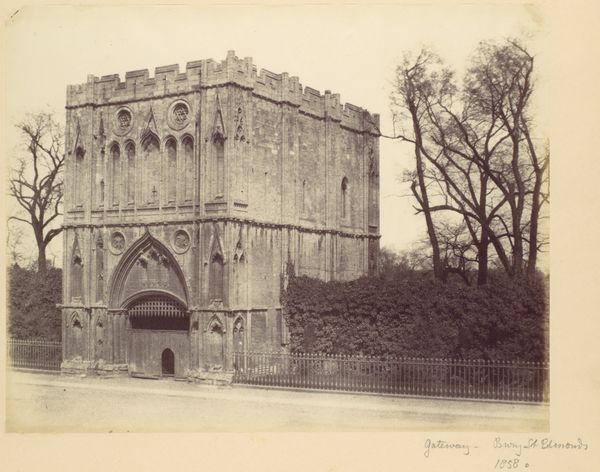
Dimensions: Image: 21.4 x 26.9 cm (8 7/16 x 10 9/16 in.) Mount: 32.5 x 37.9 cm (12 13/16 x 14 15/16 in.)
Copyright: Public Domain
Curator: The photograph before us, titled "Thornton," was captured around 1860 by Alfred Capel Cure. It's a remarkable piece currently housed in the Metropolitan Museum of Art, New York, a testament to early photography and its romantic gaze upon architectural ruins. Editor: What strikes me immediately is the pervasive sense of melancholy, like a lost kingdom overtaken by time. The warm sepia tones enhance the feeling of historical weight, and those creeping vines seem determined to reclaim what's left. Curator: Precisely! The ruin here speaks of impermanence. Notice how Cure employs light and shadow to amplify the architectural details, transforming the structure into a symbol of fading power. These romantic undertones tap into our longing for bygone eras, connecting the architecture with emotional resonance. Editor: Definitely. I’m also considering this image through a lens of power structures, questioning what the photographic romanticization of such places masks. Was this merely aesthetic appreciation, or did it serve to naturalize specific social hierarchies of the time, where some were meant to inherit and others to observe their ruin? Curator: That's a valid interpretation. While architectural photography of that period could certainly reinforce class structures by glorifying the domains of the wealthy, Cure may also have intended a meditation on mortality. These symbolic forms often possess complex, multi-layered meaning, depending on the viewer. The ruins can be both beautiful and serve as a warning against worldly pride. Editor: And considering the style – this romanticism. Does it provide a comforting historical narrative while eliding the messier truths of empire and inequality? That gate in the foreground, slightly ajar, almost beckons us into a world filtered by nostalgia, doesn't it? Curator: It's a gateway into a carefully constructed representation, undeniably. And by imbuing these buildings with symbolism, Cure is not simply recording reality, but shaping a specific interpretation of history and the human condition. I can see the enduring cultural fascination with ruins in this photographic study. Editor: Yes. Looking at this ruin photographed almost two centuries ago helps me understand how deeply entwined history, representation, and our present-day anxieties are. A sepia-toned reminder that the stones we stand on tell conflicting, complex tales. Curator: And the symbols we find here still echo in how we construct identity through built form. It seems we always look for meaning in such forms.
Comments
No comments
Be the first to comment and join the conversation on the ultimate creative platform.
